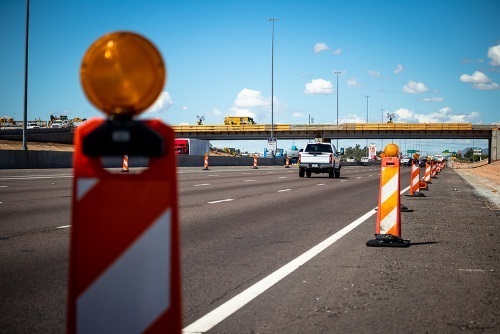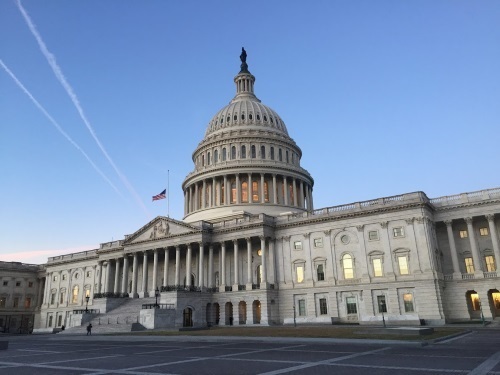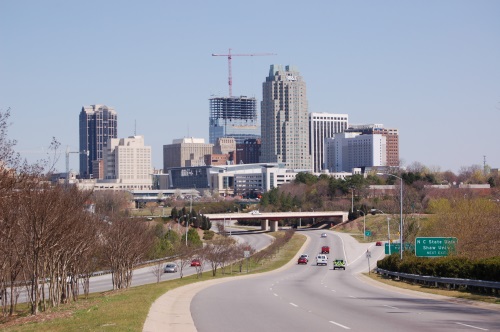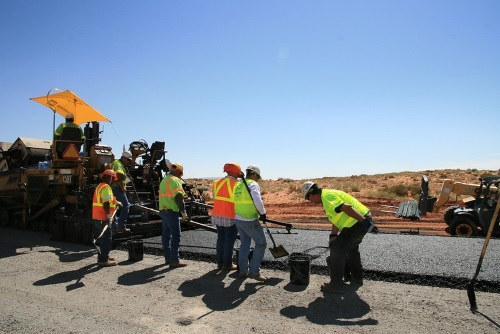The idea of tackling sustainability from a
state department of transportation perspective can evoke as many questions as
ideas; what should be done, who should do it, and how can anyone tell if it’s
working?
DOTs in at least two states – Arizona and Minnesota
– have been addressing sustainability issues for a few years now, but each is
taking a different approach to altering traditional transportation activities’
impact on the environment.
“Climate change is happening in Minnesota, and we want to do our part,” explained Tim Sexton, assistant commissioner, and chief sustainability officer of the Minnesota DOT.
A Minnesota state law – The Next Generation
Energy Act – put the onus on the MnDOT to lead the state’s efforts to reduce
greenhouse gas emissions and promote transit, biking and walking. “There was
some work done here prior to 2014, but it was not coordinated between
departments,” Sexton said. Though the department lacked specific resources
dedicated to the effort, “we started a high-level strategic planning committee
on sustainability, and we saw it as an opportunity to be more strategic.”
The committee created an initiative called
Pathways to Decarbonizing Transportation, began working with experts to create
sustainability models and held a series of meetings around Minnesota to get
public feedback. Out of that exercise, MnDOT developed incentives of up to $250
in toll credits for new EV buyers and planned a $2 million clean transportation
funding pilot program.
MnDOT also created a Sustainable Transportation
Advisory Council, an 18-member group of executives from the public, private and
non-profit sectors tasked with overseeing and evaluating Minnesota’s
sustainability efforts and making recommendations to MnDOT. Its first meeting
is scheduled for March 2020.
While
Minnesota focused on the user-end of the sustainability spectrum – reducing
greenhouse gas emissions and promoting greener transportation modes – Arizona
put its efforts into its core functions.
“There are a number of different approaches to sustainability,” said Steven Olmsted, Arizona DOT’s NEPA assignment manager. “If you look at the material from AASHTO, it runs the gamut. We’re still adding a lot of new highways because of our growth so it made sense to look at sustainability from that point of view.”
ADOT began partnering with construction groups and industry and “really tied the effort to design engineering, construction, and maintenance,” Olmsted said. “We’ve also gotten into design guidance and scoping considerations.”
Olmsted said many sustainability efforts can be justified from an economic standpoint, “but it still remains that you must make a qualitative business case.
“At
the end of the day, we are not going to spend ten times the cost of a unit just
to be sustainable,” he said “We’ve tried to address the social pillar of what
sustainability means in a DOT. At the same time, there really has to be a
business case.”
In a
recent report ADOT filed on its sustainability efforts, Olmsted and his staff
noted that integrating such a program inside a DOT is “a particularly complex
undertaking” and “a daunting effort.”
“It’s
not for the faint of heart; I guess I’m a glutton for punishment,” Olmsted
said. “But at some point, one person or a group of persons has to decide,
‘What’s the lowest hanging fruit where we can gain some traction?’ That’s how
you get started.”
Sexton with MnDOT agreed that “there’s a ton of
opportunities for states to take advantage of lowering emissions and saving
money,” but he said the issue goes beyond dollars and cents.
“We really view this as a crisis,” Sexton said.
“This is a scientific issue and a moral or even an existential issue. We want
our kids to enjoy the wonderful things Minnesota has to offer. There’s a
culture in Minnesota that is committed to our environment. For us, it’s not a
political issue.”






